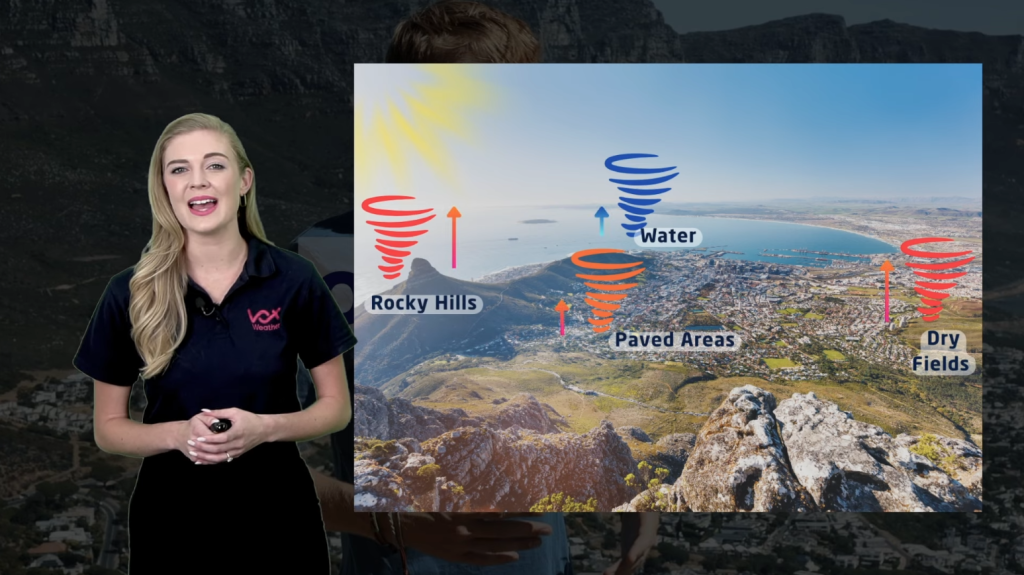Beyond the Forecast – the Joys of Paragliding!
Annette and Michelle brave the skies – without an engine
This Vox Weather story goes beyond maps and models to uncover a true-life story that’s shaped by the weather from start to finish – in this case, the fantastic experience of paragliding!
Vox Weather Meteorologists Annette Botha and Michelle Cordier decided to brave the altitude over Cape Town recently and experience the joys of paragliding for themselves. The idea was to go ‘beyond the forecast’ and learn how weather shapes this aerial sport, while also looking at the science behind good flying conditions.
Special thanks to adventure film maker, content creator and paraglider @MattAshwell, who flew with Annette and Michelle while giving commentary and explanations, as well as @SkyrideParagliding school for their first lesson.
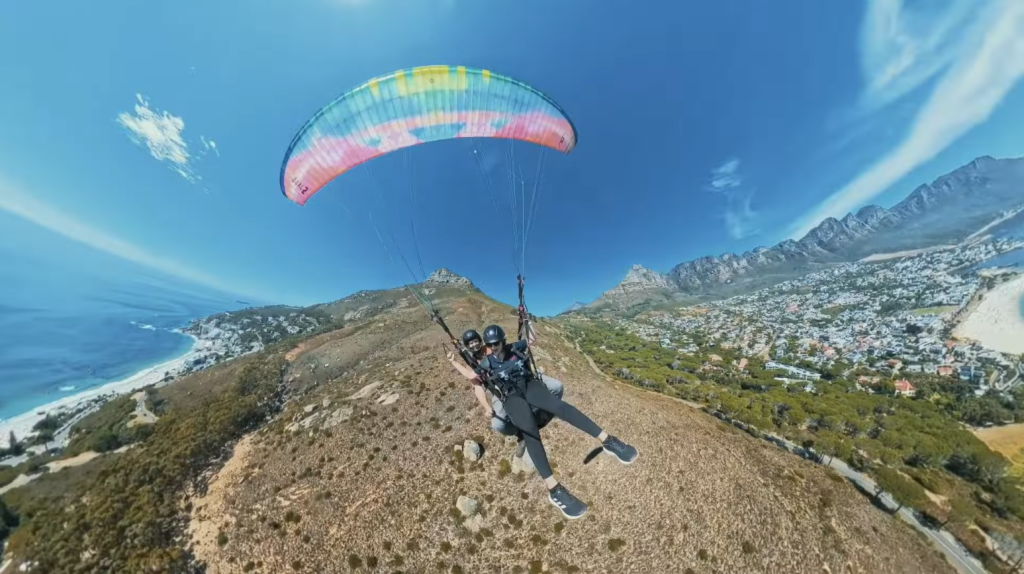
Looking to the Skies
“People have been obsessed with the idea of flying for hundreds of thousands of years – and recently it was the turn of Michelle and myself!” says Annette.
“Here at Vox Weather, we thought it would be a fantastic idea to experience paragliding, as well as find out more about the important role of the weather in helping paragliders to get aloft and then stay airborne without the assistance of an engine.”
Michelle adds: “There are multiple stories about people in bygone years who didn’t only dream about flight, but actively attempted to fly by strapping birdlike wings or other devices onto themselves and jumping from towers – usually with very unfortunate results. As we know today, gravity is a force to be reckoned with!
“And so, for people to fly, they needed to find a way to overcome the force of gravity on body mass – in other words, people needed to find a way to create, or use, lift. This is a key concept in the sport of paragliding.”
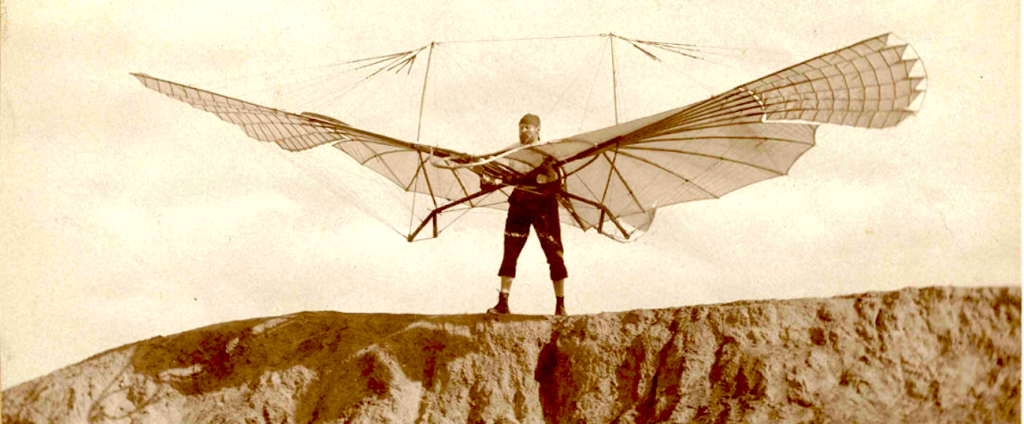
Let’s go deeper into how Annette and Michelle traded the studio for the skies, and find out how paragliders stay in the air for so long without an engine.
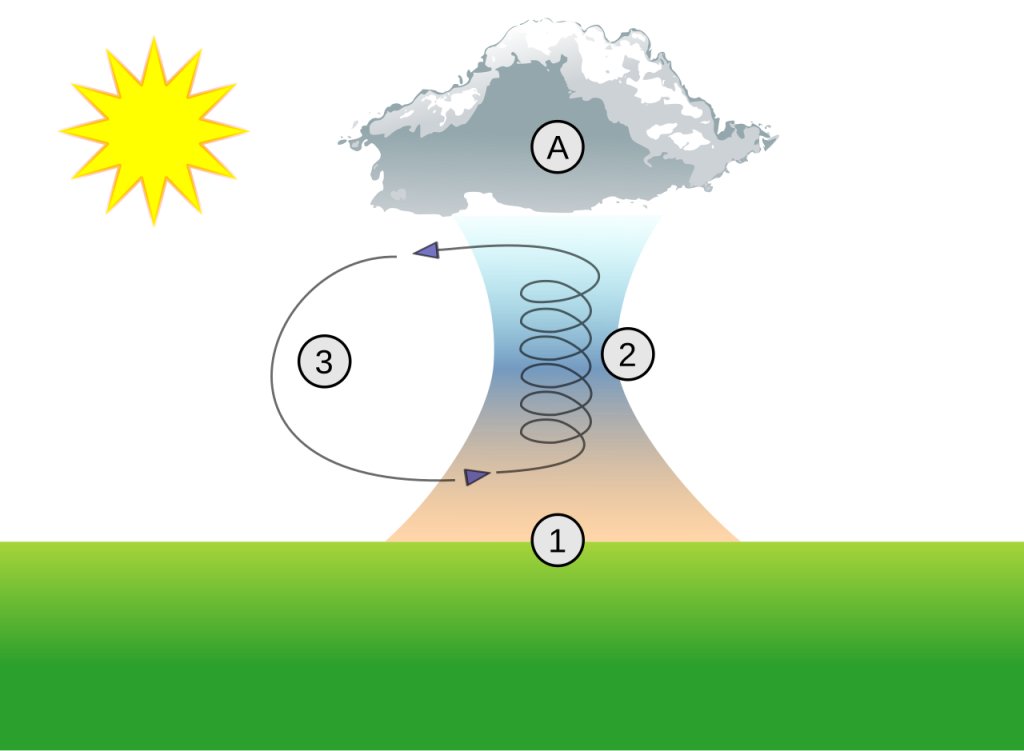
Weather’s Critical Role in Paragliding
After hiking up Lion’s Head in Cape Town to the take-off spot, the ladies first chatted to Matt and discussed what makes paragliding so special, as well as some of the science behind the sport.
“I think paragliding is one of the most weather-dependent sports out there,” says Matt, “and I generally start looking at the forecast two or three days in advance. The wind’s direction and strength are the two most important factors for any paragliding flight.”
Paragliders depend on thermals, which are rising air currents, to stay in the air for longer, without having to glide directly to the ground from their original height because of gravity’s effect.
“Paragliding is a three-dimensional sport,” says Matt. “You’re moving up and down in the atmosphere and the wind strength can change as you’re moving. And so it’s important to make sure that the wind is optimal where you take off and also higher up on your flight path, to make sure you don’t get blown away.
“I advise beginners to make sure that the thermals aren’t too strong on the day that you’re flying, so you don’t find yourself out of your depth with regards to the turbulence that you’re flying through.”
With regards to wind speed, he notes that the paragliders’ flying window is quite limited, at between about five and 25 kilometres per hour.
“Anything stronger, and you can’t fly because it’s too dangerous,” he explains, “and when it’s less, you can’t fly because there’s no lift. Besides the wind’s direction and strength, paragliders also look at the wind gradient, which is the increase in wind as you go higher in the atmosphere.”
And Now for a Spot of Science
Michelle explains: “Thermals, as Matt outlined, are critical to paragliders, allowing them to ride these rising air currents and gain altitude. Thermals form in different areas and at different strengths because the sun heats the ground unevenly. For example, dry fields and rocky hills heat up quickly and create strong thermals, while cooler areas like water and green fields create weak or no thermals.
“Paragliders also use specific graphs to see if flying conditions are good. A ‘Skew-T’ graph shows how temperatures and dew point – the atmospheric temperature below which water droplets begin to condense, and dew can form – change with height. This helps to plot where thermals can form.”
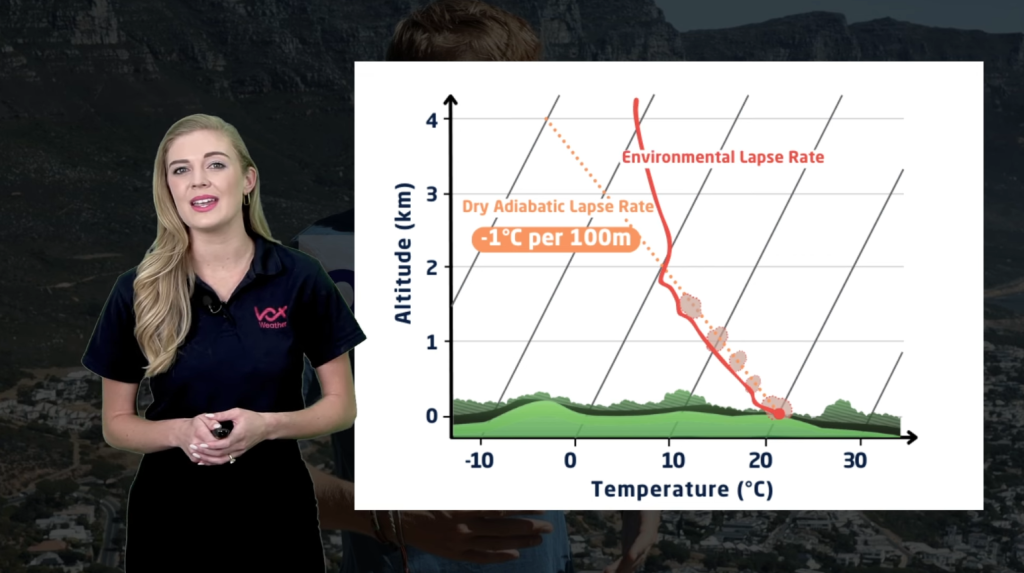
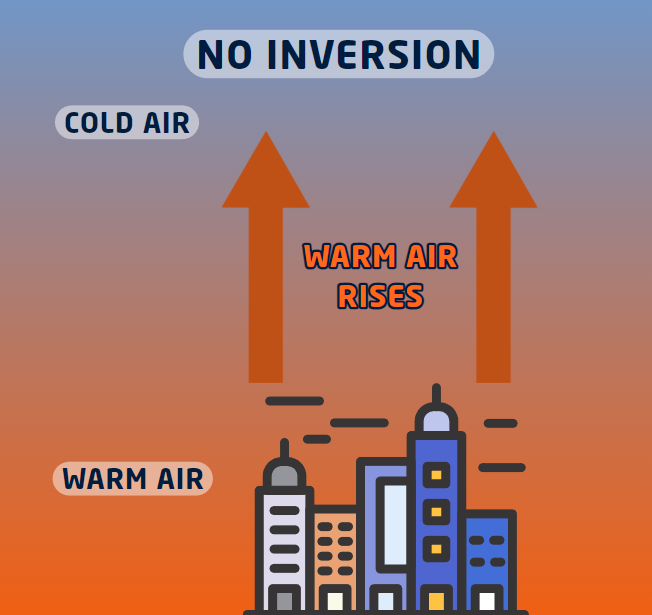
On the day that Annette and Michelle went paragliding, they experienced a weather phenomenon known as an ‘inversion’ (which had been anticipated, as per the forecast) and which prevented all those who were flying that day from going particularly high.
An inversion, in paragliding terms, means that at a certain altitude you find a band of air that is warmer than the air below and above it; this is an inversion.
Annette clarifies: “As seen in the graphics, we find that on a normal day, hot air continues to rise from the Earth, ultimately losing its heat and gradually becoming colder with atmospheric distance. With the creation of an inversion, however, we find a layer of warm air that traps the cooler air below it, preventing thermals from rising. This can limit a paraglider’s altitude and make it harder to stay airborne.”
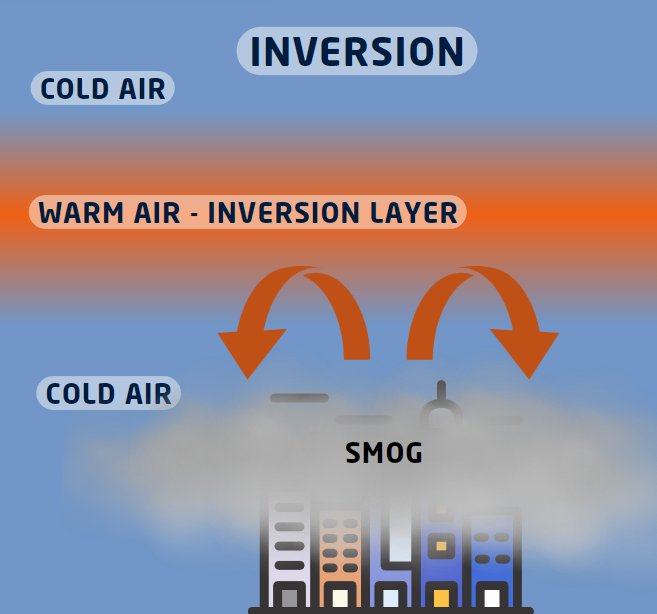

Clouds often form an inversion for two reasons: firstly, because at an inversion the air mass changes characteristics, which often means that the combination of temperature and moisture is right to bring about the dew point; and secondly because the conditions attract the gathering of dust particles, which are necessary in cloud formation.
Matt adds: “We can clearly see how important weather forecasting is for paragliders, and we have a few specific options that we look at, including Windy and SkySight. Another very good site developed by a local guy is a weather forecasting site named RASP (Regional Atmospheric Soaring Prediction), which is what paragliders can use for very localised climatology in the Western Cape.”
Where Adventure Meets Atmosphere
There’s no doubt in Matt’s mind that paragliding is an addictive sport. He says: “The reason I’m hooked on paragliding is because of your ability to interact with the wind and be so high above the ground – and then of course the sensation of flying. To be able to do it so freely without an engine is just the best feeling ever!”
Annette adds: “We want to give Matt a huge shout-out for sharing his passion with us and showing us the skies from a different perspective – where adventure meets atmosphere!”
Stay tuned for more adventures ‘Beyond the Forecast’, where Vox Weather will explore how the weather shapes adventures across the country.
